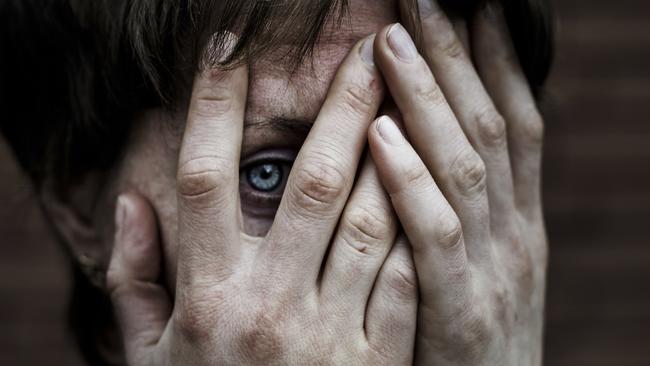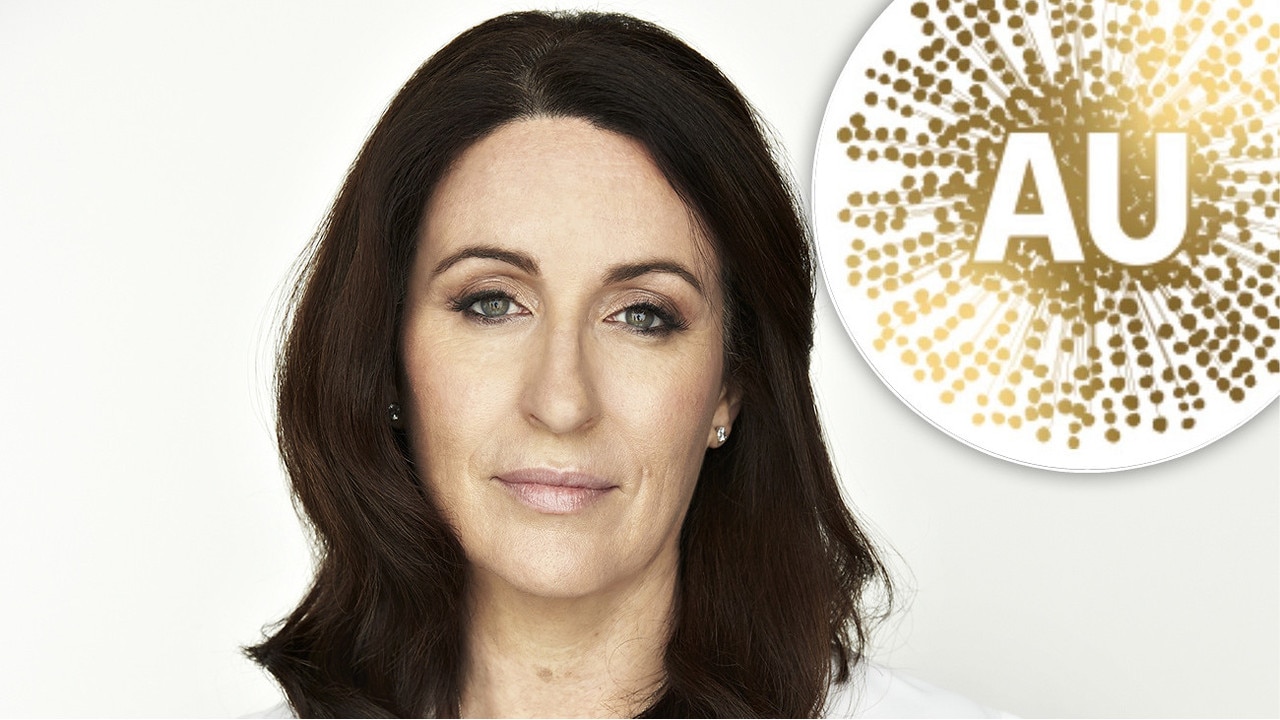The irrefutable facts of domestic violence in Australia
There’s a lot of data thrown around in the domestic violence debate, usually with very little understanding of what the data is, where it comes from and what it really means. So let’s look at the facts.

Rendezview
Don't miss out on the headlines from Rendezview. Followed categories will be added to My News.
There’s a persistent view, particularly among men who feel under attack by feminists, that anyone who talks about gendered violence is demonising men. And that in doing so, not only are they are factually incorrect, they’re also deliberately ignoring male victims.
Because of this both men and women feel they need to defend men, and muddy the waters on the cause and effect of violence.
The problem with this is that it utterly disregards the truth — men are significantly more likely to be both the perpetrator and the victim of violence. It also ignores the reason people try so hard to explain and gain acceptance of the truth about male violence.
Why do we need to talk about gendered violence? All violence is wrong
If we can’t recognise a problem for what it is, and understand why it exists, we can’t fix it. Although women are almost all the victims of sexual violence against adults, more men than women are victims of homicide and assault.
But men’s and women’s experiences of violence are not a mirror image of each other. When we talk about male victims, particularly in domestic violence, there’s too often an assumption that if a man is the victim, a woman must be the perpetrator. This just isn’t the case. In the overwhelming majority of cases, the perpetrators of violence, against both men and women, are other men.

We need to talk about this because we need to understand why it’s happening to have any hope of changing it.
Think about it this way. We know people who drive when they’re drunk are the ones most likely to injure or kill themselves and others. So not only do we make it illegal to drink and drive, we make sure everyone, and particularly young drivers, know the risks.
This isn’t demonising anyone who drives a car, or even all people who drink. And we certainly don’t assume that every driver on the road is drunk, but the fact that most of us are responsible adults who would never drink and drive isn’t a reason to stop educating everyone about the dangers.
For reasons we still don’t clearly understand, men are the ones most likely to commit violence, so focusing our attention on the source of the risk is the most effective thing we can do to prevent more violence occurring.
Not all men
One of the most common response to any discussion of gendered violence is the “not all men” diversion. But we’re not talking about all men; we’re talking about violent men. If you’re not a violent man, we’re not talking about you.
If you’re lying peacefully on a towel next to a pool and you hear the lifeguard yell “stop running”, you wouldn’t jump up and aggressively defend yourself, that would be ludicrous. You might look around to see who was running, or you might even ignore it; you were just lying on a towel, so you know an instruction to stop running wasn’t directed at you. And you’d know that arguing with the lifeguard would distract them from their job — stopping the people running on slippery surfaces where someone could get hurt.
This is exactly what happens with the “not all men” argument. Of course not all men are violent. If they were there’d be no one left alive to complain. But every time a discussion about why men are violent is diverted to a pointless “not all men” fight, the real issue, the one that puts everyone in danger, is lost.
Emotional Abuse
This is another tactic used to derail conversations about gendered violence. Women commit emotional abuse.
Yes, they do. But to understand this properly we need to understand what emotional abuse actually is. It’s not the same as hurt feelings. Someone can lie to you, cheat on you, call you names and leave you, and not commit emotional abuse. Equally, emotional abuse can occur without those things.
Emotional abuse is specifically about power and control; it is designed to debilitate someone, tear down their self-esteem and independence, for the sole purpose of keeping them under the control of their abuser.
Emotional abuse is part of domestic violence, and it can be terribly damaging on its own, but when it is combined with physical or sexual abuse, the effects are exponentially worse.
This is why the emotional abuse argument is not a quid pro quo. Women, who may well be emotionally abusive, are far less likely than men to combine it with physical or sexual abuse. So while it is undeniably terrible for the victims, it rarely has the exponential damage women experience at the hands of abusive men.
What about male victims?
Much of the resources for victims of domestic violence is concentrated on women. The reason for this is not that no one cares about male victims, it’s simply that women are most at risk of life-threatening partner violence.
In NSW between 2000 and 2012 there was not one single case of a man being killed by an abusive female partner, but more than 120 women were killed by their abusive male partners. In the 31 cases where women did kill their male partners, he was the perpetrator of domestic violence against her (see below for details).
Where men do need help, and are almost certainly not getting it, is in recovering from violence perpetrated against them, both as adults and as children.

In large part this is because men are taught it’s weak to express fear and vulnerability; masculinity is too often defined as requiring strength and stoicism. Asking for help in recovering from fear, trauma or even just loneliness or insecurity isn’t part of the “be a man” lexicon.
Men who want or need that kind of support find it difficult to ask for, and difficult to find when they do ask. This undoubtedly contributes to the violence men enact against themselves and each other, and absolutely deserves more attention, but it isn’t the same service needed by women who are the victims of abusive men.
Lies, damn lies and reliable facts
There’s a lot of data and statistics thrown around in this debate, usually with very little understanding of what the data is, where it comes from and what it really means.
The Personal Safety Survey (PSS) is a particular favourite, too often it’s cited as fact, rather than what it actually is: statistical extrapolation of a sample population’s perception of the violence they remember and admit to experiencing.
The PSS shouldn’t be dismissed on those grounds, it’s still a highly useful tool and a reliable indication of how people perceive violence in their lives, but that’s all it is.
Crime data, sourced from various police databases is another one that often comes up. But crime data only is only about crimes reported to police, not all the crimes that occur. We know under-reporting is an issue, particularly of sexual and domestic violence, so again, it’s an indication, not an absolute truth.

There’s really only one completely reliable dataset on domestic violence in Australia. It isn’t skewed by under-reporting, each case is thoroughly investigated by highly trained professionals and meticulously reviewed by multiple court proceedings. It’s homicide data. The most robust information is not the figures provided by police or statisticians, but by the Coroner’s Court, where homicides are the sole focus of investigation.
Irrefutable facts
The NSW Coroners Court Domestic Violence Review Team have been reviewing and reporting on all the domestic violence homicides in NSW over the last 12 years. Their latest report paints an unarguable picture of gendered violence.
Of all domestic homicides:
- 41 per cent of the victims are men
- 78 per cent of the offenders are men
Intimate partner homicides:
- 22 per cent of victims were men
- 81 per cent of offenders were men
- In all but three cases where men were killed by women, police identified him as the domestic violence abuser.
Where police and court investigation found a history of domestic violence in the relationship prior to the murder:
- 96 per cent of the victims were women, all killed by male abusers
- 4 per cent of the victims were men, all killed by male abusers
There was not one single case in the whole 12 years where a man was killed by a woman who had been abusing him.
127 women were killed by men who were identified by police and the Coroner’s Court as a domestic violence abuser.
Other domestic homicides against adults, which include family members other than partners, and the new or ex partners of the victim or their spouse.
- 84 per cent of victims were men
- 87 per cent of offenders were men
Domestic violence homicides against children:
- 63 per cent of offenders were men
- 57 per cent of victims were boys
Finally, in data provided by the NSW Bureau of Crime Research, just over 1,000 people were murdered in NSW over the 12 years covered by the Coroner’s Court report. Excluding domestic violence murders:
- 82 per cent of the victims were men
- 89 per cent of the perpetrators were men
There were about the same number of attempted murders in that time:
- 86 per cent of the victims were men
- 92 per cent of the perpetrators were men
These differences are too stark to ignore, and too tragic to dismiss. We need to address the problem at its source, which means recognising the truth of male violence and doing something to change it. For everyone’s sake.
Jane Gilmore is a freelance writer from Melbourne
Twitter: @JaneTribune


